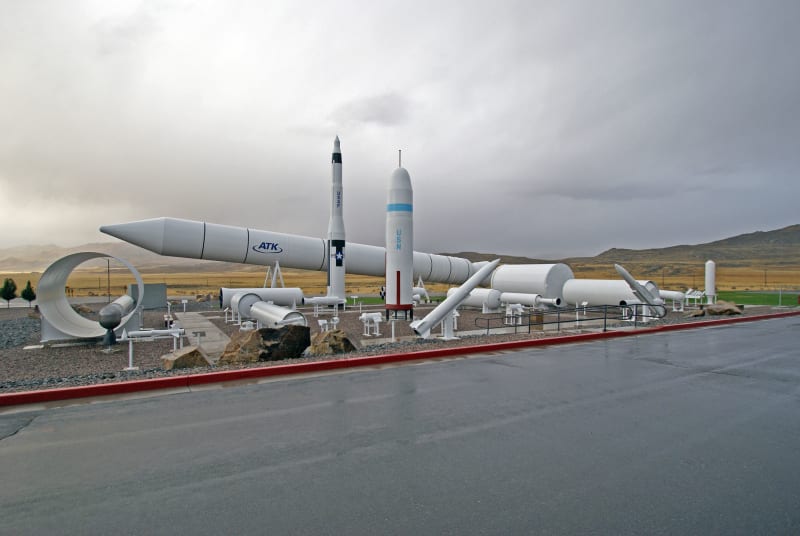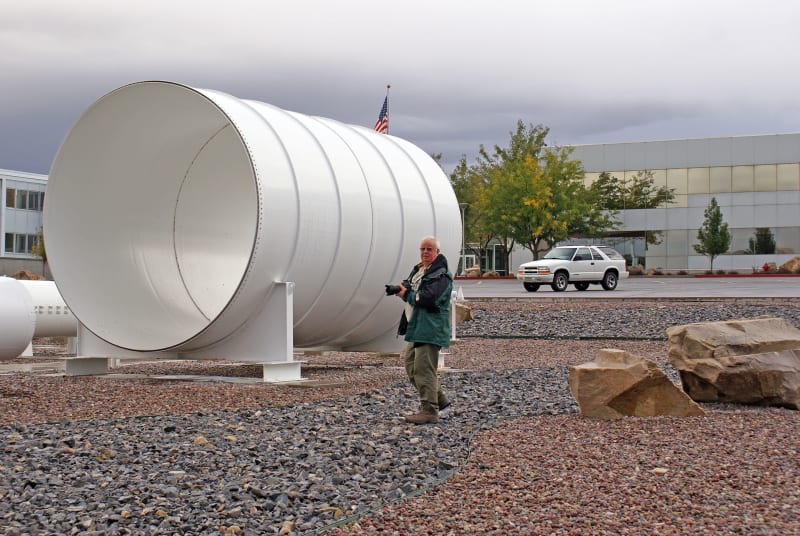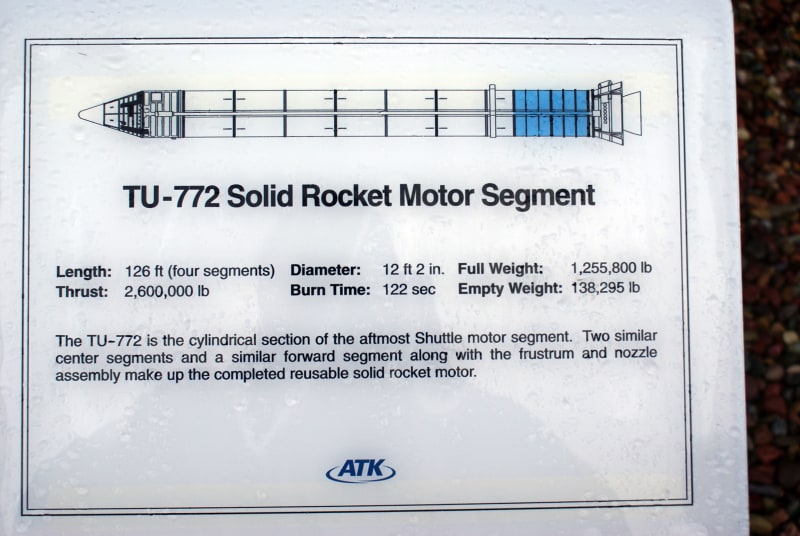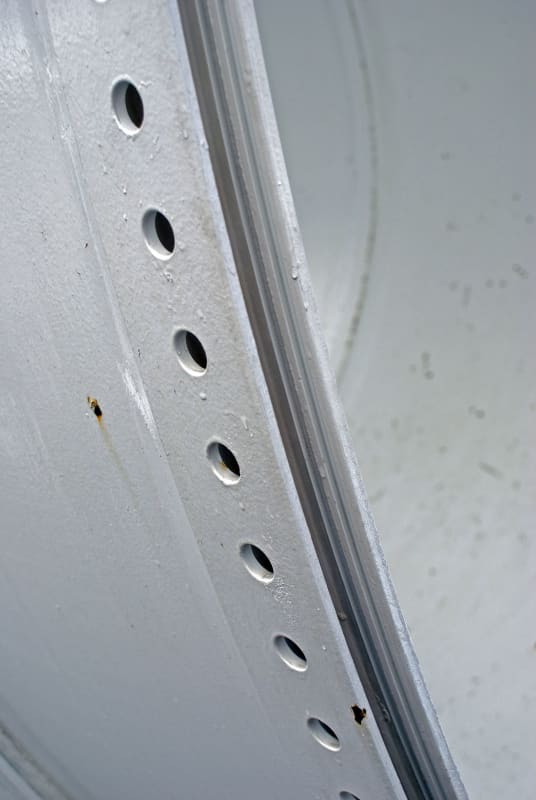Navigation
Install the app
How to install the app on iOS
Follow along with the video below to see how to install our site as a web app on your home screen.
Note: This feature may not be available in some browsers.
More options
Style variation
-
Congratulations TugboatEng on being selected by the Eng-Tips community for having the most helpful posts in the forums last week. Way to Go!
You are using an out of date browser. It may not display this or other websites correctly.
You should upgrade or use an alternative browser.
You should upgrade or use an alternative browser.
Boeing again 47
- Thread starter GregLocock
- Start date
- Status
- Not open for further replies.
- Moderator
- #262
Hokie66 said:And it has been found in testing. Good work, Boeing.
Certification test flights aren’t the best time to find out that your engine mounts fail under working loads.
-
2
- #264
You'd prefer they find it in service Tom?
Everyone,
This thread has become like a chicken coop, where every hen pecks on the wounded bird. In this case you aren't solving anything, just pecking for the sake of poking something big from a safe distance.
I suggest this thread has served its purpose and can be closed.
Everyone,
This thread has become like a chicken coop, where every hen pecks on the wounded bird. In this case you aren't solving anything, just pecking for the sake of poking something big from a safe distance.
I suggest this thread has served its purpose and can be closed.
Alistair_Heaton
Mechanical
It's quite a common occurrence.
The q400 had it's engines derated 3-4 times due to cracking of multiple structural bits.
I never did a Max TakeOff Power in one in 2700 hours, even with the final derated certified version.
The live loads on a dynamic real life engine are effected by not just the thrust vector. There is other forces on them which are only found when they entre the test flight stage. It can be something as annoying as a vortex being shed off the ice detection vane on the side of the nose.
There is also common findings on the undercarriage when they start experiencing live pilot flown landings.
Sorry spar.... I agree about the Boeing side of things, the stuff now generally being reported is just normal. And they seem to have started progressing with leadership which was was the root cause of the issues in the company. I would like to hear more about the changes in the regulatory bodies to trap this behaviour. And notice I said bodies, it's not just the FAA at fault here.
The A220 has been flying 8 years now there is still issues in various systems to be rectified. A huge update is due soon that gets rid of some major ones.
The q400 had it's engines derated 3-4 times due to cracking of multiple structural bits.
I never did a Max TakeOff Power in one in 2700 hours, even with the final derated certified version.
The live loads on a dynamic real life engine are effected by not just the thrust vector. There is other forces on them which are only found when they entre the test flight stage. It can be something as annoying as a vortex being shed off the ice detection vane on the side of the nose.
There is also common findings on the undercarriage when they start experiencing live pilot flown landings.
Sorry spar.... I agree about the Boeing side of things, the stuff now generally being reported is just normal. And they seem to have started progressing with leadership which was was the root cause of the issues in the company. I would like to hear more about the changes in the regulatory bodies to trap this behaviour. And notice I said bodies, it's not just the FAA at fault here.
The A220 has been flying 8 years now there is still issues in various systems to be rectified. A huge update is due soon that gets rid of some major ones.
TugboatEng
Marine/Ocean
3DDave said:"This part is custom to the 777-9, and each 777-9 engine includes two of this component so there is redundancy,"
Challenger had 3 of each component (o-rings). I thought this was part of any ABET accredited engineering curriculum. Adding additional parts that will fail under the same conditions that caused the first part to fail does not increase safety.
-
2
- #268
The SRB o-rings did increase safety. They simply didn't guarantee it under all conditions, particularly for use outside the design conditions. There were numerous instances where the primary ring was ablated and formed a leak path and the secondary held.
The question for redundancy is always for what failure cause is the redundancy supposed to cope. The most reasonable one is for an undetected manufacturing error, such as an inclusion or other fatigue initiation site. For example, two engines are suitable for ETOPS because the most likely cause for engine failure is something specific to an engine, like a fatigue crack in an engine blade or disk that is unlikely to be in the other engine. But, exposed to a fine volcanic ash or a dense flock of birds or maintainers leaving the oil drain plug o-rings in the shop, those engines aren't redundant at all.
If it is for design error, that can be a huge problem as the duplicated item can merely extend the time before an initial failure is discovered, such as the double lead screw nut in the MD-80 of Alaska Air fame, where both nuts had identical wear rates, just slowed by sharing the load, and both worn out at the same time. The two lasted longer than one alone would have, but reliance on the design didn't consider how they would in fact fail and, more importantly, how it would signal that one of them had failed.
In the case of the o-rings in the SRBs, when operated within the design conditions, NASA had time to see the primary failure; their problem was accepting the primary failure and not fixing it, therefore elevating the secondary o-ring to a primary status.
It's possible someone had a brain fart on an axially loaded member. It appears to be two pins and a rod, if the story is accurate. Not an easy thing to get wrong, but without photographs of the broken item, impossible to decide.
I still lean towards someone in the supply chain either making an error or just fraudulently certing the material and the alloy isn't it what was supposed to be. Maybe the Russian supply of titanium isn't as secure as it should be.
I am unsure that whoever was speaking for the company was relying on an engineering evaluation or simply noting the that the second thrust link acted as a backup. I doubt the statement was run through the Reliability Engineering department to sign off on.
As AF447 proved, redundancy is very difficult.
Edit: The o-rings were back up to zinc chromate putty, so perhaps the count of 3 sealing items came from that.
The question for redundancy is always for what failure cause is the redundancy supposed to cope. The most reasonable one is for an undetected manufacturing error, such as an inclusion or other fatigue initiation site. For example, two engines are suitable for ETOPS because the most likely cause for engine failure is something specific to an engine, like a fatigue crack in an engine blade or disk that is unlikely to be in the other engine. But, exposed to a fine volcanic ash or a dense flock of birds or maintainers leaving the oil drain plug o-rings in the shop, those engines aren't redundant at all.
If it is for design error, that can be a huge problem as the duplicated item can merely extend the time before an initial failure is discovered, such as the double lead screw nut in the MD-80 of Alaska Air fame, where both nuts had identical wear rates, just slowed by sharing the load, and both worn out at the same time. The two lasted longer than one alone would have, but reliance on the design didn't consider how they would in fact fail and, more importantly, how it would signal that one of them had failed.
In the case of the o-rings in the SRBs, when operated within the design conditions, NASA had time to see the primary failure; their problem was accepting the primary failure and not fixing it, therefore elevating the secondary o-ring to a primary status.
It's possible someone had a brain fart on an axially loaded member. It appears to be two pins and a rod, if the story is accurate. Not an easy thing to get wrong, but without photographs of the broken item, impossible to decide.
I still lean towards someone in the supply chain either making an error or just fraudulently certing the material and the alloy isn't it what was supposed to be. Maybe the Russian supply of titanium isn't as secure as it should be.
I am unsure that whoever was speaking for the company was relying on an engineering evaluation or simply noting the that the second thrust link acted as a backup. I doubt the statement was run through the Reliability Engineering department to sign off on.
As AF447 proved, redundancy is very difficult.
Edit: The o-rings were back up to zinc chromate putty, so perhaps the count of 3 sealing items came from that.
Alistair_Heaton
Mechanical
There seems to be a huge issue with materials in aviation just now.
Ranges from Engines through to skin rivets
I wouldn't be surprised if the starliner issues are due to out of spec materials.
AF447 the primary system was in his bed. It was the secondary and tertiary that failed completely.
Ranges from Engines through to skin rivets
I wouldn't be surprised if the starliner issues are due to out of spec materials.
AF447 the primary system was in his bed. It was the secondary and tertiary that failed completely.
- Moderator
- #270
A unique but possibly accurate description of Boeing. grinSpar said:This thread has become like a chicken coop, where every hen pecks on the wounded bird.
--------------------
Ohm's law
Not just a good idea;
It's the LAW!
- Moderator
- #271
I once encountered a unique exception to this.1503-44 said:A technology company that cannot manage to hang on to their technical staff is doomed.
Train them and lose them is death by 1000 cuts.
Once upon a time in a turd world country We were purchasing a 1600 KVA genset from Cat. The largest in our micro-grid.
There were some strange laws in this country.
The year, for employers was 14 months long.
Once upon a time, a politician got elected by promising an extra months pay to all workers.
That worked so well for the politician that later another Pol got elected by adding another year to the payroll year.
In addition to the annual was a requirement that after 20 years of service, an employee was to be paid a bonus of two years pay.
At an informal breakfast with the sales manager and the son of the CEO and owner of the Cat franchise this came up.
It was mentioned that most employees took the two years bonus and quit to become self employed, and this must be distressing to the company.
The response;
It is actually to our advantage.
Our mechanics are all factory trained on Cat engines.
Now, as well as our shops, there is a network of independent, factory trained mechanics across the country.
As these mechanics are trained on Cat systems only, this gives us a sales advantage.
What we lose is compensated for by extra sales due the the relative ease of finding a trained Cat servicemen in the country.
A very unique exception to the general rule.
--------------------
Ohm's law
Not just a good idea;
It's the LAW!
btrueblood
Mechanical
Original design was 2 orings, 3rd oring and capture tang added after Challenger, along with other features.
ChorusDen said:Appears NASA to make a final announcement regarding whether Butch and Suni will ride home via starliner or via a crew dragon on 8/24/24 at 1pm EST
It would be a brave decision to let them come back on the starliner, given the recent scrutiny. All spacecraft can fail, at any time.
JohnRBaker
Mechanical
Well, it looks like the Starliner astronauts are not coming home until early NEXT year, when they'll hitch a ride on a returning SpaceX mission. There's still no word as to how and when they intend to bring the Starliner craft home. As currently configured, it can't operate autonomously. Perhaps they can reprogram it from the ground so that it could return on a automatic flight program. If not, they'll eventually have to ditch it since it's occupying one of the limited docking stations on the ISS.
John R. Baker, P.E. (ret)
Irvine, CA
Siemens PLM:
The secret of life is not finding someone to live with
It's finding someone you can't live without
John R. Baker, P.E. (ret)
Irvine, CA
Siemens PLM:
The secret of life is not finding someone to live with
It's finding someone you can't live without
-
1
- #276
JohnRBaker
Mechanical
btrueblood said:Original design was 2 orings, 3rd oring and capture tang added after Challenger, along with other features.
On one of our 'photo safaris', my friend Dennis and I stopped at the ATK testing facility near Promontory, Utah. They had what they called a 'Rocket Park' (we saw it on one of those 'brown signs' you see along the interstate), outside their fenced-in secure area where anyone could stop and look at examples of their rockets, which included things like the Minuteman Missile and the shuttle booster, as well as some smaller and experimental rockets:

October 2009 (Sony A100, 10-24mm)
Now being a couple if engineers, we immediately went and looked at the shuttle booster. And while there was never any mention in any of the placards about the Challenger accident, they didn't try to hid anything either. In fact, they had on display a section of the booster housing, which would have been very close to where the failure occurred, where you could clearly see the O-Ring grooves.
Here's a shot of that section of the booster:

October 2009 (Sony A100, 10-24mm)
And of the placard describing where this section was in the booster assembly:

October 2009 (Sony A100, 10-24mm)
And here's a close-up of the O-Ring groves:

October 2009 (Sony A100, 10-24mm)
Anyway, it was an interesting stop and well worth the time and distance as it was a bit off of our planned route (we were heading to Butte, Montana).
John R. Baker, P.E. (ret)
Irvine, CA
Siemens PLM:
The secret of life is not finding someone to live with
It's finding someone you can't live without
- Moderator
- #277
NBC said:Aug. 24, 2024, 10:14 AM PDT / Updated Aug. 24, 2024, 10:54 AM PDT
By Denise Chow
NASA will call on SpaceX to bring home two astronauts who have been stuck on the International Space Station since early June after their Boeing spacecraft ran into several problems midflight, the agency said Saturday.
--------------------
Ohm's law
Not just a good idea;
It's the LAW!
Wall Street Journal said:
Here is a link to a Wall Street Journal Video on NASA's Plan B, and Why SpaceX Is Completing Boeing’s Starliner Mission.
Of course, I am assuming the Censor Gods approve of the Wall Street Journal as a Permissible Source of information, and don't delete this post like they did the ZeroHedge excerpt from their article?
arsTECHNICA said:NASA's senior leaders in human spaceflight gathered for a momentous meeting at the agency's headquarters in Washington, DC, almost exactly 10 years ago.
These were the people who, for decades, had developed and flown the Space Shuttle. They oversaw the construction of the International Space Station. Now, with the shuttle's retirement, these princely figures in the human spaceflight community were tasked with selecting a replacement vehicle to send astronauts to the orbiting laboratory.
Boeing was the easy favorite. The majority of engineers and other participants in the meeting argued that Boeing alone should win a contract worth billions of dollars to develop a crew capsule. Only toward the end did a few voices speak up in favor of a second contender, SpaceX. At the meeting's conclusion, NASA's chief of human spaceflight at the time, William Gerstenmaier, decided to hold off on making a final decision.
A few months later, NASA publicly announced its choice. Boeing would receive $4.2 billion to develop a "commercial crew" transportation system, and SpaceX would get $2.6 billion. It was not a total victory for Boeing, which had lobbied hard to win all of the funding. But the company still walked away with nearly two-thirds of the money and the widespread presumption that it would easily beat SpaceX to the space station.
The sense of triumph would prove to be fleeting. Boeing decisively lost the commercial crew space race, and it proved to be a very costly affair.
Link to the history of the Boeing vs SpaceX Contract Competition and Split of money
racookpe1978
Nuclear
When the Space Shuttle Booster O-rings failed - and I know there were several "near miss" failures before the fatal burn-through - were these failures at the lowest O-ring joint because that was exposed to most burning gases the longest (since it was closest to the exhaust itself)? Or were the previous failures scattered up and down through all the joints?
- Status
- Not open for further replies.
Similar threads
- Replies
- 135
- Views
- 33K
- Replies
- 16
- Views
- 1K
- Locked
- Question
- Replies
- 25
- Views
- 2K
- Locked
- Question
- Replies
- 40
- Views
- 2K
- Locked
- Question
- Replies
- 19
- Views
- 965
